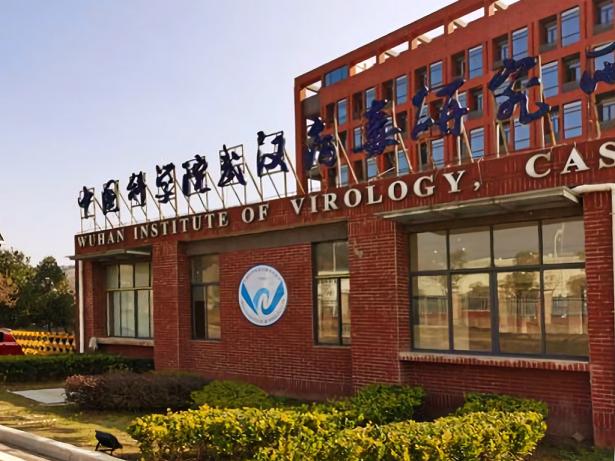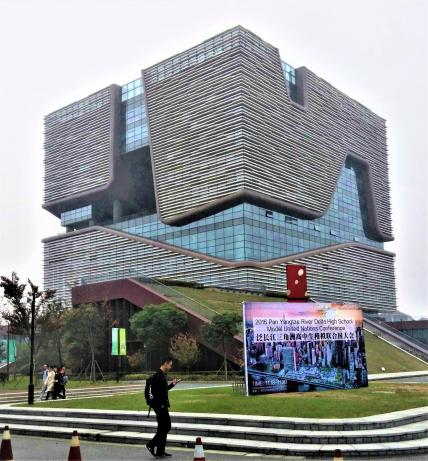Geopolitical tensions between the US and China, combined with the COVID-19 pandemic, have had a profound impact on the otherwise peaceful realm of international research cooperation. China has long been criticized for its relatively closed system, displayed by a lack of reciprocal access to funding or research data—which has led to the development of an uneven playing field—as well as concerns for a lack of academic freedom, insufficient protection of intellectual property rights (IPR), and illegitimate or even illegal technology transfer to the Chinese market. Recently, additional fields of controversy have emerged, related mainly (but not only) to issues of national security. These include Chinese influence on Western university campuses, misconduct regarding fraudulent grant double-dipping, unethical research contributing to human rights violations in Xinjiang, and Hong Kong’s National Security Law and its potential impact on academic freedom worldwide, to name just a few.
Such developments have challenged the decades-long trend of intensifying research collaboration between China and the world. A significant share of current criticism comes from the United States (US) and Australia—countries that boast the most robust collaboration networks, student bodies, and academic exchanges with China—but the approach to engagement is also being re-assessed in Europe. The European Union (EU) wants to remain open to international cooperation with China but seeks to rebalance the relationship, calling for strengthening its knowledge base and domestic expertise on China. Similarly, various EU member states are asking whether and how they should re-assess working with China, either explicitly or implicitly.
In Germany, the Federal Ministry of Education and Research (Bundesministerium für Bildung und Forschung, BMBF) has stressed the need to build-up “China competences.” Accordingly, the German Rectors Conference (Hochschulrektorenkonferenz, HRK) has articulated its “Guiding Questions for Collaboration on China,” while the German Academic Exchange Service (Deutscher Akademischer Austauschdienst, DAAD) has developed a paper entitled “No Red Lines: Scientific Cooperation under Complex Framework Conditions.” Meanwhile, the Swedish Foundation for International Cooperation in Higher Education and Research (STINT) has released the “Responsible Internationalisation Guidelines,” and the Netherlands’ LeidenAsiaCentre has monitored the Europe-China higher education landscape most recently with its document “Towards Sustainable Europe-China Cooperation.” This debate is ongoing also in the United Kingdom (UK), a uniquely positioned non-EU country with a higher education sector strongly engaged in China, which is summarized by the Higher Education Policy Institute’s collection of essays or Universities UK’s checklist for managing internationalization risks.

Core socialist values displayed at Tongji University, Shanghai (Source: Andrea Braun Střelcová, 2017).
The current situation presents a valuable window of opportunity to assess the past, present, and future of research, innovation, and higher education collaboration with China. Observing how research collaboration matures through perpetual balancing between domestic interests and international scientific principles, this short paper adds empirical complexity to the burgeoning debates summarized above. In particular, it will briefly outline the stages through which Chinese participation in research collaboration has passed, taking recent developments in the Sino-European setting as a crucial case for examination.
Characteristics of China’s Science Policy
China has become globally influential in the last decade, not only in politics and the economy, but also in science, technology, and higher education. The country is the second biggest research and development (R&D) spender after the US, with rising gross domestic product (GDP) expenditure on R&D, at a total of 2.23 percent in 2019 (the US spent 2.83 percent of its GDP on R&D in 2018). It is also rising in the global university league tables: the 2021 Times Higher Education World University Rankings featured five universities from China’s mainland in the Top 100. For the first time, Tsinghua and Peking universities scored in the top 25.
Despite decelerating economic growth, China has a fast-paced working environment, a large talent pool, and a growing scientific community. According to Richard P. Suttmeier (2019), the country’s research institutional architecture can be characterized by five pillars: a) the Chinese Academy of Sciences (CAS) and its institutes; b) the university sector; c) industrial R&D; d) research institutes and academies affiliated to ministries, and; e) military research. As with elsewhere in the world, the R&D funding comes mainly from industry. According to the Organisation for Economic Co-operation and Development (OECD), the share of industry sector in China’s gross domestic expenditure on R&D was 76.1 percent in 2016. The importance of industry cannot be underestimated, although in China the distinction between the public and private commercial R&D sphere may not be as clear-cut as in OECD countries.
The system is also marked by a centralized control over higher education, research, and innovation, which is manifested through strategic planning. In science and technology (S&T), this includes the “National Medium- and Long-term Plan for Science and Technology” (2006–20) and its follow-up outline (2021–35) with their focus on key strategic areas. In the realm of higher education, the “Double World-Class Universities Plan” (2015) seeks to improve the quality of selected universities and disciplines while placing an emphasis on the Chinese national context. Setting S&T policy priority areas is largely a top-down process, following a pragmatic approach based on the country’s needs. National plans are then replicated at provincial and city levels. Return migration is strongly supported through the talent programs (e.g., National Thousand Talent Plan) and other funding schemes, providing attractive incentives for (mainly overseas Chinese) scientists to return to the country.
How Chinese and European Academia Became Engaged in the Post-Mao Era
Europe’s research organizations began to take an interest in engagement following the gradual normalizations of diplomatic ties between China and the West, marked by President Nixon’s visit to the country in 1972. The first institution was the Max Planck Society (MPG) in Germany, which started cooperating with China in the mid-1970s. Today, the MPG has around 160 joint projects with China, of various types, sizes, and research objectives. France’s main basic research agency, the Centre National de la Recherche Scientifique (CNRS), also started engaging with China around the same time, and today has more than 100 cooperation projects in the country. In addition, following the 2004 intergovernmental agreement on Franco-Chinese cooperation for the prevention and control of emerging and re-emerging infectious diseases, two projects were implemented. The first was the construction of the Institut Pasteur of Shanghai, a partnership between the Institut Pasteur, CAS, and the city of Shanghai, which presently hosts 28 research teams. The second was the cooperation in the construction of China’s highest-biosecurity-level laboratory (BSL-4) for academic research at the Wuhan Institute of Virology.

Wuhan Institute of Virology, accredited in 2017 following the Sino-French intergovernmental agreement on the prevention and control of infectious diseases (Source: Ureem2805/Creative Commons license CC BY-SA 4.0).
Higher education, which is closely supervised by China’s Ministry of Education (MoE), also restarted international cooperation with Western universities during the reform period after 1978. The first reform-era joint institute was the US-China Johns Hopkins Center at Nanjing University, which dates back to 1986. This was followed by the government’s encouragement of Sino-Western joint projects throughout the 1990s. In 2003, the MoE relaxed its policy regarding joint ventures in education, which opened the way for foreign universities to establish campuses as private higher education institutions with a Chinese partner investor. The pioneer project was the University of Nottingham Ningbo China, established in 2004, followed by Xi’an Jiaotong Liverpool University in 2006. New US-China universities such as NYU Shanghai or Duke University Kunshan followed in 2014. Other European institutes, such as the Sino-Danish Center (2010) and the Lancaster University College (2016), adopted the Hopkins-Nanjing model, becoming embedded colleges under Chinese public universities. Tongji University in Shanghai, one of China’s most prestigious institutions with roots as a German medical school, hosts a set of Sino-European colleges: the Sino-German College, Sino-Italian Campus, Sino-French Institute, Sino-Spanish Campus, and Sino-Finnish Center. Such structures have become platforms to train students, exchange staff, engage in research cooperation, apply for funding, generate sources of revenue, and grow inter-institutional ties in general.
Simultaneously with this growth, China has been transitioning into a world S&T power thanks to its government’s extensive investment in the sector. The EU policy towards China clearly demonstrated the changes in 2014, during the budget transition from its 7th Framework Programme (2007–13) to the 8th, Horizon 2020 (2014–20). Chinese participation in EU research projects used to be funded directly by the EU, because China was classified as a developing country. In Horizon 2020, China was moved into the category of “emerging economies” and ranked the same as the USA or Japan. This profound change was not only a symbolic recognition of China’s robust funding system, but had significant practical implications for hundreds of Chinese researchers and organizations who used to be beneficiaries of EU funding. Under the new conditions, they are still encouraged to apply as parts of EU project consortia, but cannot access the EU funds and must instead find domestic sources.
This development coincided with the arrival of Xi Jinping as paramount leader of the PRC. The subsequent policy trend gradually gearing to a more centralized, heavier ideological control have introduced a new degree of ambivalence to Europe’s cooperation with China. On the one hand, the establishment of new projects, joint education and research structures flourished. In 2017, the Italian Embassy in China hosted the third conference for representatives of joint Sino-European research structures in China, which featured dozens of in-depth discussions focusing on IPR, legal issues, management set-ups, and other practicalities. A related mapping survey reported that 144 joint structures existed, most of them as virtual platforms without a legal entity in Beijing or Shanghai, with eight new joint labs being opened every year. On the other hand, the European academic community has been growing more circumspect in its approach to developing joint collaboration in China. In 2016, Groningen University in the Netherlands canceled its plan for a China branch campus at the last minute due to concerns around insufficient quality assurance, coupled with questions on the safeguarding of academic freedom. Tensions between an open Europe, contrasted with the closed research system of China, were always present, but have gradually become more apparent. This larger trend in EU-China relations culminated in the 2019’s EU strategy “Outlook for China,” which designated China not just a “cooperation partner” but also a “systemic rival.”
The Challenging Path to Rebalancing the Relationship
Chinese researchers, universities, and research institutions are actively increasing their scientific excellence and expanding their international networks. At the same time, ideological control over higher education and research is growing. The interplay between these two forces will influence the future trajectory of research not only in China, but also in the world.
Research collaboration is a multifaceted process that develops over years, sometimes decades. On a political level, joint cooperation areas are often flagged for such cooperation upon mutual negotiation between relevant government bodies. Their identification is a long-term process, involving workshops, panels of experts, and series of negotiations. International collaboration can also start bottom-up, from colleagues who wish to work together and gradually formalize their work into joint projects or research centers.

Xi’an Jiaotong Liverpool University in Suzhou (Source: Andrea Braun Střelcová, 2016).
This is not always easily done in China, which has a distinct science policy and a system perceived by Europeans as relatively opaque. However, science diplomacy can thrive even in difficult environments where the traditional channels for a dialogue are less likely. The EU considers research and innovation cooperation with China an important part of the EU-China relationship. Similarly, many individual European countries, such as France, the Netherlands, and Spain have their own vehicles of cooperation with China, consisting of political and sectoral dialogues, science diplomacy networks, joint projects, funding calls, laboratories, research or educational centers, funding programs, and scientific associations. Overall, their actors are aware of the challenges presented by the Chinese environment, but they adhere to the principle that cooperation is essential and in Europe’s interest as long as it is managed strategically.
How to Engage in the Post-Golden Age?
Since the Reform and Opening era began in 1978, Europe-China higher education, research, and innovation cooperation has steadily grown in both depth and width. Such cooperation remains strong and is likely to continue growing. However, the swift scientific rise of China, a country with an authoritarian one-party state system, has raised concerns regarding potential risks of such engagement. As a result, Europe has entered a new phase of rebalancing its relationship with China, stressing a more realistic approach to a mutually beneficial research collaboration. This call reflects long-term frustrations as well as newly-emerged challenges.
In research partnerships, the shared goal of producing high-quality research should override differences of citizenship or political ideology. However, the paradox of science is that its global mission is embedded in national frameworks. This dichotomy has not been adequately studied with regards to China’s international cooperation. Many aspects underlying the country’s higher education and research institutions’ engagement in global partnerships, its management arrangements, strengths, weaknesses, organizational structures, and political dynamics are yet to be understood. In particular, more in-depth studies are needed to analyze the framework conditions affecting international research partnerships, the potential differences among them, and the difficulties of navigating diverging interests, goals, and values within the national and international contexts. Such insights from the Europe-China experience provide an interesting lens through which China’s involvement in global science can be better understood.
